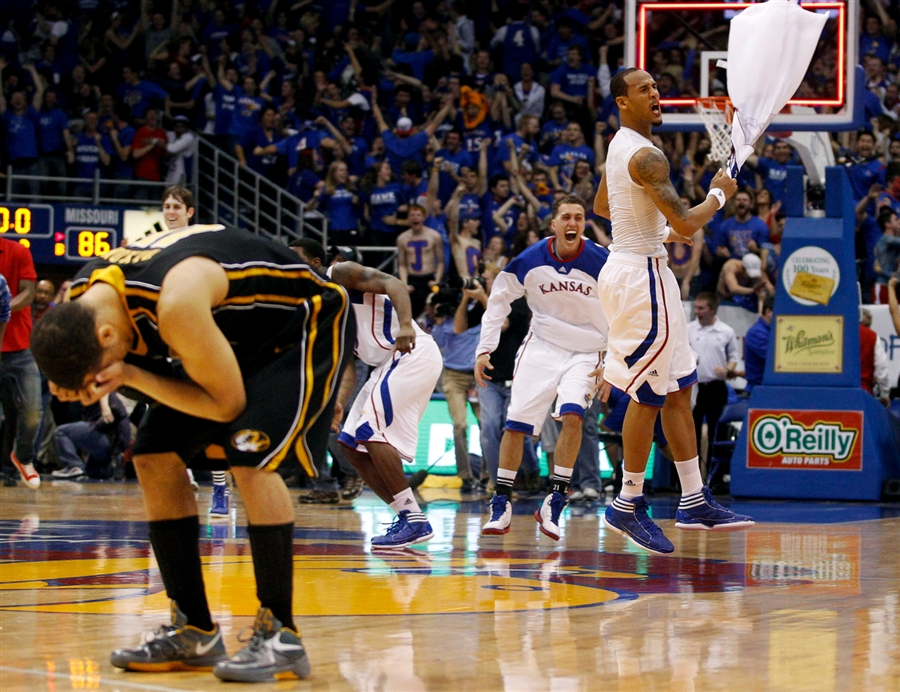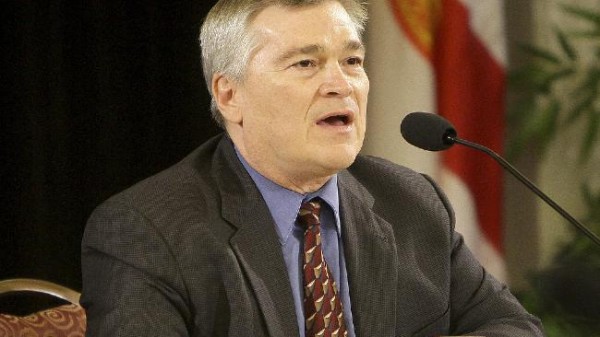Posted by cwilliams on February 28th, 2012
Clark Williams is a Big 12 microsite writer, and a current student at the University of Missouri.
As a Missouri student, nobody needs to ask me how much the most recent Border War hurt. But the intensity of the rivalry this season has done wonders for not only the Border War rivalry as a whole, but the entire Big 12 conference. Unfortunately, this beautiful rivalry is coming to an end because of conference politics realignment. Fans from both Missouri and Kansas are saying that they don’t need each other, and they’re fine with the notion of never seeing their evil conference foe ever again. How do I sum up my feelings as a Missouri fan about Kansas? At the end of Anchorman, Vince Vaughn utters, “I hate you Ron Burgandy. But damn it, do I respect you!” This should be the general mindset. Hate your rival as you should, but it’s idiotic for any Tiger or Jayhawk fan to be simply complacent with this rivalry ending. In recent years, whether discussing Missouri’s rise in competitiveness in football, or Kansas’s hoops National Championship in 2008, these rivalry games have nearly defined each school’s athletic season. Go 2-10, but beat Kansas/Missouri and the season was a success.

You Won't Find Another Rival That Induces This Much Emotion: Kansas and Missouri
In 2008, I witnessed my first spewing of Kansas hatred. It was during my freshmen orientation, and part of the presentation by the leaders was a skit making fun of the Jayhawks. These orientations are meant to teach incoming freshmen the essentials: how to navigate your way through Missouri’s confusing campus, how to set up your meal plan, and how to hate Kansas with a passion. Only the essentials. I knew of the Border War rivalry, but did not know the history of it, and had never known it to be of an intensity that rivals Ohio State/Michigan and Duke/North Carolina. I asked a fellow peer of mine if the rivalry “was really that big of a deal,” and he just scoffed, immediately knowing I was not from around here. He was right. I was an awkward kid from Texas, already uncomfortable by the different culture presented to me on the campus of Missouri and in the city of Columbia. I had grown up a Longhorn fan, and the only rival I knew of was the Sooners of Oklahoma and those folks in Aggieland. Still, you never truly appreciate a collegiate rivalry until you become a part of the student body. I know this might resonate negatively with some of you, as the schools you cheer for are not always your alma maters. But, it’s true, and I will gladly hear any of your attempts to dissuade me from thinking this.
Read the rest of this entry »
| big 12, microsites
| Tagged: big 12, border war, conference realignment, kansas, missouri, sec
Share this story















































